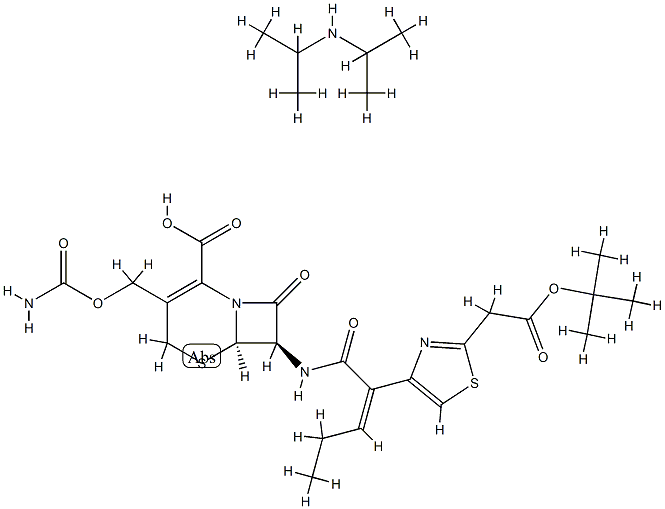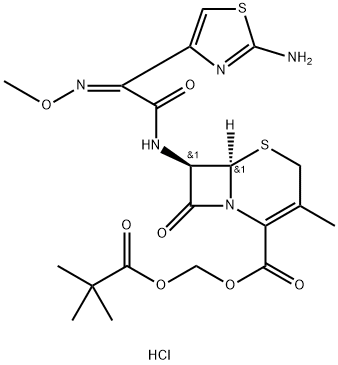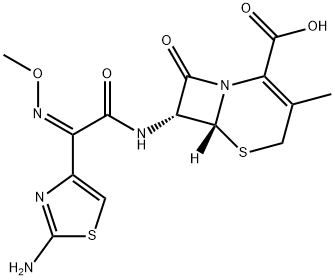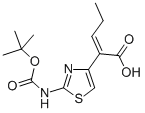Precursor of cefcapene diisopropylanmine salt
- CAS NO.:153012-37-4
- Empirical Formula: C29H43N5O8S2
- Molecular Weight: 653.81042
- MDL number: MFCD31382339
- EINECS: 604-880-2
- SAFETY DATA SHEET (SDS)
- Update Date: 2023-05-19 17:31:54

What is Precursor of cefcapene diisopropylanmine salt?
Description
The precursor of Boc-Cefcapene(BCN) is a key intermediate in the synthesis of Cefcapene. Cefcapene is a fourth generation cephalosporin antibiotic, which introduces protective groups on its side chain amino group and the carboxyl group of the cephalosporin nucleus to obtain the precursor of Boc-Cefcapene(BCN). After modification of the BCN, various Cefcapene drugs can be obtained.
Chemical properties
Yellowish crystalline powder.
The Uses of Precursor of cefcapene diisopropylanmine salt
N-Boc Cefcapene N,N-Diisopropylamine is a precursor of Cefcapene N,N-Diisopropylamine.
Safety information for Precursor of cefcapene diisopropylanmine salt
New Products
Tert-butyl bis(2-chloroethyl)carbamate 4-Methylphenylacetic acid N-Boc-D-alaninol N-BOC-D/L-ALANINOL 3-Morpholino-1-(4-nitrophenyl)-5,6-dihydropyridin- 2(1H)-one Furan-2,5-Dicarboxylic Acid Tropic acid 1,1’-CARBONYLDIIMIDAZOLE DIETHYL AMINOMALONATE HYDROCHLORIDE R-2-BENZYLOXY PROPIONIC ACID 1,1’-CARBONYLDI (1,2-4 TRIAZOLE) N-METHYL INDAZOLE-3-CARBOXYLIC ACID (2-Hydroxyphenyl)acetonitrile 4-Bromopyrazole 5-BROMO-2CYANO PYRIDINE 5,6-Dimethoxyindanone 5-broMo-2-chloro-N-cyclopentylpyriMidin-4-aMine 2-(Cyanocyclohexyl)acetic acid 4-methoxy-3,5-dinitropyridine 2-aminopropyl benzoate hydrochloride 1-(4-(aminomethyl)benzyl)urea hydrochloride diethyl 2-(2-((tertbutoxycarbonyl)amino) ethyl)malonate tert-butyl 4- (ureidomethyl)benzylcarbamate Ethyl-2-chloro((4-methoxyphenyl)hydrazono)acetateRelated products of tetrahydrofuran



![(6R,7R)-3-[[(Aminocarbonyl)oxy]methyl]-7-[[(2Z)-2-(2-amino-4-thiazolyl)-1-oxo-2-pentenyl]amino]-8-oxo-5-thia-1-azabicyclo[4.2.0]oct-2-ene-2-carboxylic acid](https://img.chemicalbook.in/CAS/GIF/135889-00-8.gif)

You may like
-
 2033-24-1 98%View Details
2033-24-1 98%View Details
2033-24-1 -
 1975-50-4 98%View Details
1975-50-4 98%View Details
1975-50-4 -
 2-HYDROXY BENZYL ALCOHOL 98%View Details
2-HYDROXY BENZYL ALCOHOL 98%View Details
90-01-7 -
 2-Chloro-1,3-Bis(Dimethylamino)Trimethinium Hexafluorophosphate 221615-75-4 98%View Details
2-Chloro-1,3-Bis(Dimethylamino)Trimethinium Hexafluorophosphate 221615-75-4 98%View Details
221615-75-4 -
 61397-56-6 CIS BROMO BENZOATE 98%View Details
61397-56-6 CIS BROMO BENZOATE 98%View Details
61397-56-6 -
 14714-50-2 (2-Hydroxyphenyl)acetonitrile 98+View Details
14714-50-2 (2-Hydroxyphenyl)acetonitrile 98+View Details
14714-50-2 -
 118753-70-1 98+View Details
118753-70-1 98+View Details
118753-70-1 -
 733039-20-8 5-broMo-2-chloro-N-cyclopentylpyriMidin-4-aMine 98+View Details
733039-20-8 5-broMo-2-chloro-N-cyclopentylpyriMidin-4-aMine 98+View Details
733039-20-8
Statement: All products displayed on this website are only used for non medical purposes such as industrial applications or scientific research, and cannot be used for clinical diagnosis or treatment of humans or animals. They are not medicinal or edible.